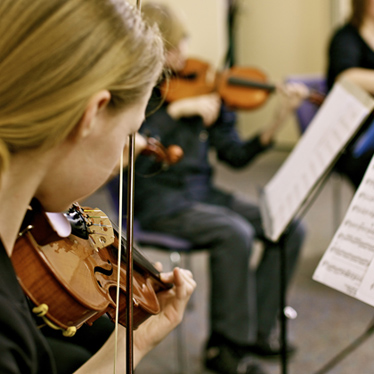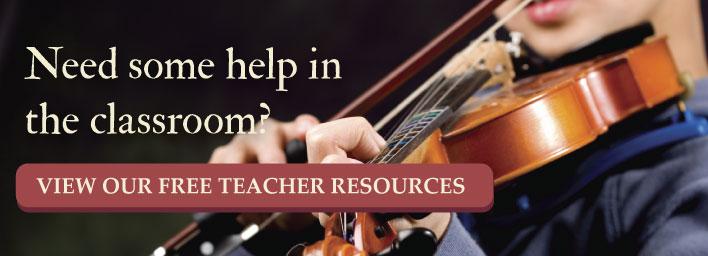Teacher's Corner: Cool Ways to Organize Your Music Classroom

Standard music classroom organization consists of:
- A chalkboard or whiteboard on a wall or two
- The teacher's desk and some bookshelves in a corner
- Room to store the instruments and related equipment
- A big open space for chairs/risers and music stands.
However, there are other, cooler ways to organize your classroom space.
The following suggestions are designed to organize a music classroom in a way that fosters learning, encourages differentiated learning modalities, and that gives children time to practice. The demands of modern-day academics, sports, and other extracurricular activities (not to mention complicated multi-home lives) make it difficult for students to get their practice in at home.
Design a Music Room Space That Fosters Learning
Your music classroom set-up can create an oasis of sorts – where students feel encouraged to learn and get the support they need, rather than anxious or scared that they aren’t prepared or “good enough.”
Keep Learning Resources Visible
Anything that serves as a visual learning aid – posters of the staff with note names, rhythmic reminders, solfeggio syllables and hand gestures, postural or bowing techniques, etc., should be posted along the front wall and front sidewalls. If you use them as “decoration” towards the back of the room, they aren’t as visible, and students don’t have the opportunity to absorb the information consciously or subconsciously as they look around.
Bookshelves with storage bins and racks for instruments
If you spend any time at a single school, odds are you’ll be doing some fundraising to get your inventory of dilapidated instruments beefed up and whipped into shape. It’s easy for things to get lost in the closet recesses, so setting up bookshelves with both books and music scores, as well as clear plastic storage bins or baskets to store smaller instruments and accessories keeps things available, visible, and organized.
Use upright racks for storing string instruments along the sides of the room (here’s a great post on a DIY viola/violin rack that your students’ parents or volunteers from the community can build for far cheaper than a purchased version). Getting instruments out of the closets clears that space for a potential learning center…
Create “learning centers?”
Research proves that students learn best in small groups. So, it’s not a bad idea to take a lesson from elementary school teachers and create learning centers in your music room. You might find you use center-learning the majority of the time to help students practice, work on music theory at desks in differentiated groups, enjoy some digital learning time, and to be taught in smaller groups by you.
Or, you may have a few “first instrumentalists” who can lead small groups, giving you time to work one-on-one with struggling or challenging students. You may find focused, small-group study fosters quicker learning, and that your whole-class playing time sounds tighter and more together.
Create a digital learning center in the back
If you opt for the “center” model, consider putting the digital learning center in the back of the classroom, or along a back corner. The handful of students working there can be seen by you from the front/middle of the room – but have only a wall in front of them, keeping them focused on what they’re doing.
Turn your closet into a small group practice room
Now that you’ve cleared out the storage closet, why not turn it into a soundproof, small-group practice room? Of course, it has to have a soundproof window so you can keep an eye on the students inside. To that end, we offer you two more posts for DIY projects that construction-savvy parents of your students or family friends can use as guidelines. The large majority of the materials you’d need can be donated from homes, local hardware stores, or affordably located at thrift stores or stores that focus on reselling contractors’ leftovers and tear outs.
- How to Soundproof a Closet to Turn it Into a Sound Booth
- How to Add A Window Opening in an Interior Wall
And, because we are always interested in promoting free, online resources for teachers, we also want to share Elizabeth Caldwell’s blog, Organized Chaos. She’s a music teacher who loves organization – so her blog is a go-to resource for teachers looking for new ways to organize their classrooms.
Is a cozy corner in order?
Having a futon, couch, or a couple comfy chairs – used as a cozy corner – can be helpful for kids who are struggling that day, or to work on tablet-based music apps more freely. Use it as a “reward” area or to honor a child that needs a little rest or comfort that day. Cover soft furniture with sheets that are washed and replaced weekly.
Now that your room is all set up, let the learning begin!


